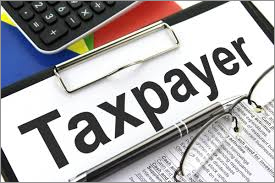
Aug
In a move that will enhance the flow of information between taxpayers and tax authorities, the Income Taxn Department has launched a revised form 26AS or Annual Information Statement from this assessment year, which will reflect details of all high-value transactions.
Since the details of high-value transactions will now be reflected to the taxpayers in the new form as against the tax department earlier receiving information from financial institutions and then acting upon it, there would now be a greater onus on taxpayers to comply in a voluntary manner.
List of specified financial transactions to be available in Form 26AS
The additional SFTs that will now be reportable and will be visible in the Form 26AS are:
- Payment of educational fees/donations above Rs 1 lakh in a year
- Hotel bills exceeding Rs 20,000
- Purchase of jewelry, white goods, marbles, paintings etc. exceeding Rs 1 lakh in a year
- Life insurance premium payment over Rs 50,000 per annum
- Payment of property tax above Rs 20,000 per annum
- Electricity bill payment above Rs 1 lakh per annum
- Health insurance premium payment above Rs 20,000
- Domestic business class air travel/ foreign travel (threshold limit not yet specified)
- Share transactions/ demat accounts/ bank lockers (threshold limit not yet specified
The SFT transactions already reportable are:
- Purchase of bank drafts or pay orders in cash (if more than Rs 10 lakh in a year)
- Purchase of pre-paid instruments in cash (if more than Rs 10 lakh in a year)
- Cash deposit in the current account (if more than Rs 50 lakh in a year).
- Cash deposit in account other than current account (if more than Rs 10 lakh in a year).
- Time deposit (if more than Rs 10 lakh in a year).
- Payment for credit card (if more than Rs 10 lakh in a year through non-cash methods. Limit is Rs 1 lakh for cash payments)
- Purchase of debentures (if more than Rs 10 lakh in a year)
- Purchase of shares (if more than Rs 10 lakh in a year)
- Buyback of shares (if the tendered value is more than Rs 10 lakh in a year)
- Purchase of mutual fund units (if more than Rs 10 lakh in a year)
- Purchase of foreign currency (if more than Rs 10 lakh in a year)
- Purchase or sale of immovable property (if more than Rs 30 lakh in a year).
- Cash payment for goods and services (if more than Rs 2 lakh in a year)
- Cash deposits during a specified period of 9th Nov to 30th Dec 2016 (if more than Rs 12.5 lakh in a current account or Rs 2.5 lakh in other accounts)
The aforesaid information will only be reported in Form 26AS if the transaction crosses certain threshold limits. It is worth noting that this information was also available with the tax authorities for earlier years and was used at the time of assessment proceedings. Providing this data to the taxpayers beforehand is hence likely to increase transparency in the tax proceedings.
Information relating to assessment proceedings, both pending and completed, has been included and it will show if assessment proceedings have been initiated and if yes, whether they are pending or completed.
The information will reflect in Form 26AS within three months from the end of the month in which the said information is received by the tax authorities.
In addition to the name, permanent account number (PAN ) and address of the taxpayer, the new form will also have the date of birth, mobile number, email address and Aadhaar number as per the tax department’s database.
Form 26AS will thus be an all-inclusive document for ease of reference for taxpayers both at the return filing stage and at the time of assessment proceedings.
Conclusion: New Form 26AS will increase the information flow to the tax authorities, especially the details of all high-value transactions which will help the government to widen the tax net and get more and more people to file their income tax returns. A total of about 55 lakh or 80 per cent of the total returns are filed by people having an income of up to Rs 5 lakh, as per the Central Board of Direct Tax’s numbers as of July 31, 2020. Only 5,066 individuals, who have an income above Rs 1 crore file returns, accounting for 0.73 per cent of the total individual tax returns.
Disclaimer: The information provided herein is based on publicly available information and other sources
believed to be reliable, but involve uncertainties that could cause actual events to differ materially from
those expressed or implied in such statements

